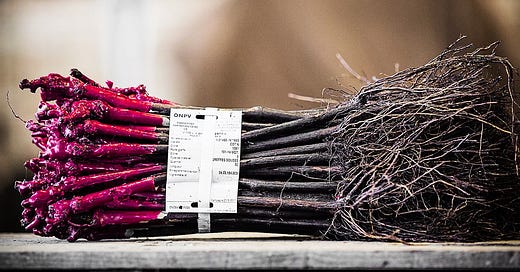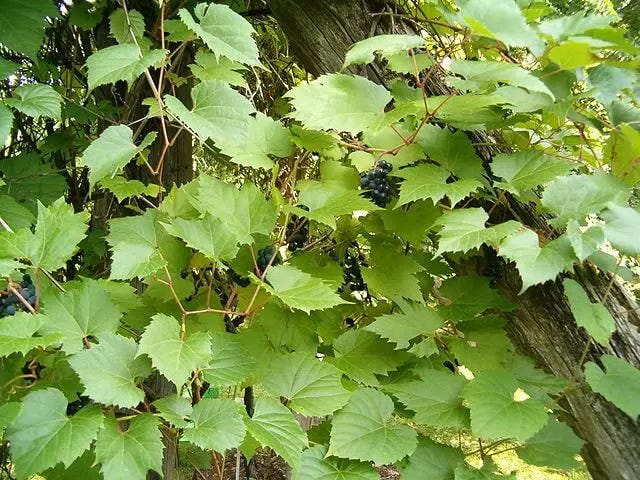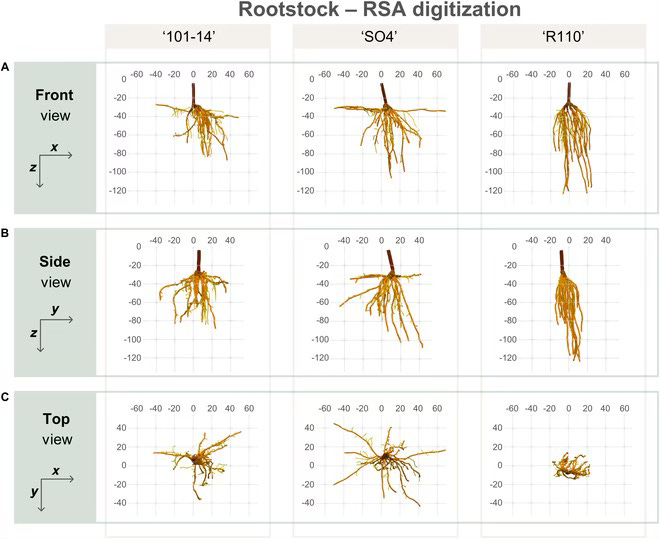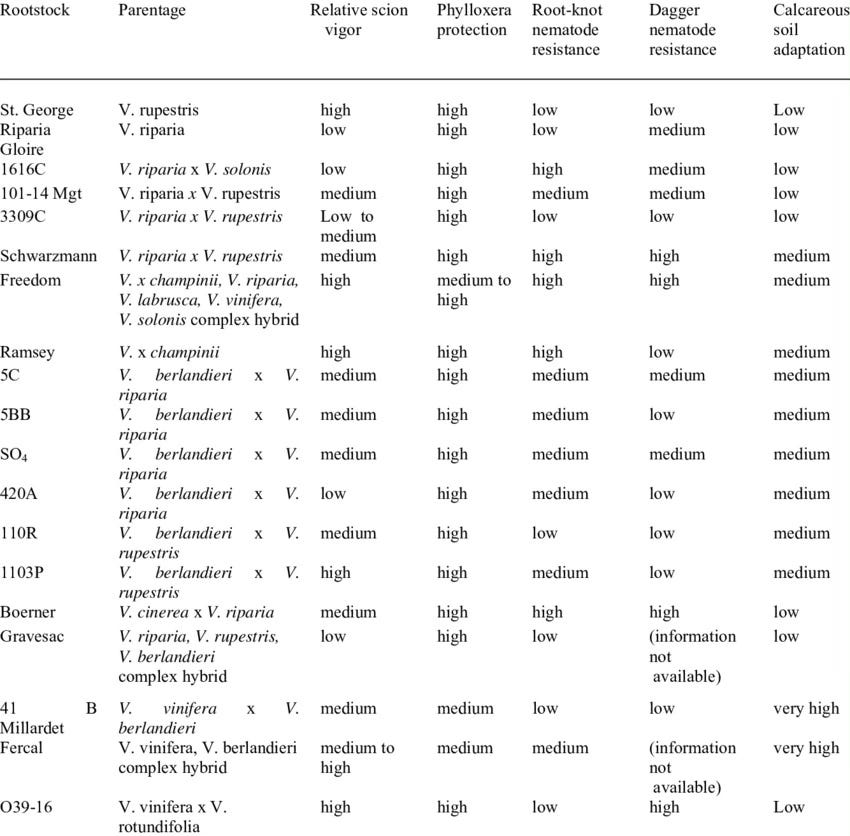The Root of the Matter
A Deep Dive into the Crucial Role of Rootstocks in Wine Quality and the Success of a Vineyard
When avid botanists in the 1850s collected specimens of American grape vines to be shipped home, they had no way of knowing just how calamitous their actions would prove to be for the European wine industry. Among these specimens lurked an uninvited guest which in relatively short order would wreak havoc across the continent, causing enormous economic damage in its wake and changing the wine-growing landscape of Europe for ever. Some regions, such as Chalosse in France’s Gascony and the German vineyards of the North Rhine, never recovered. Between 1875 and 1889 France’s wine production fell from 84.5 million hectolitres to 23.4 million hectolitres, and it would take until the 1950s before France’s production would get back on track. Of course, part of that must also be attributed to two world wars interrupting normal life.
What I’m talking about is, of course, phylloxera. Originally classified as Phylloxera vastatrix when identified in France, it has since been renamed Phylloxera vitifoliae, though as vastatrix is Latin for “the devastator” you can see why that name was initially chosen.
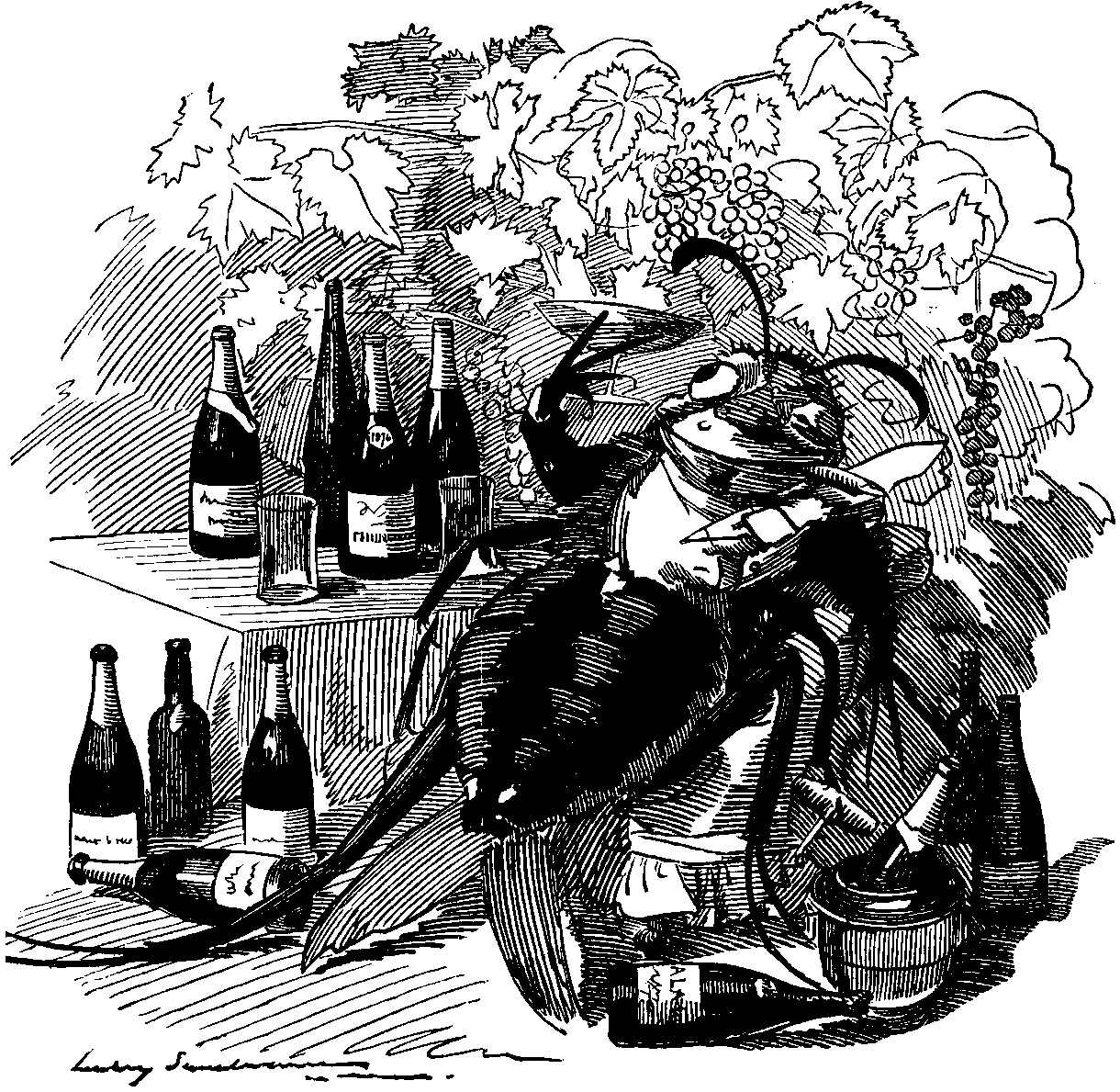
A small, almost microscopic, sap-eating insect, phylloxera feeds off a vine’s roots and leaves, causing galls and lesions that disrupt the vine’s ability to take up water and nutrients. The wounds become entry points for fungal and bacterial infections, eventually leading to root rot and the vine’s death, typically within a few years. Unlike many pests, phylloxera proved nearly impossible to control once established, sparking a rare and urgent global race to find a cure.
I have described, as a bit of a side note admittedly, how this race unfolded in an earlier article of mine on Grapevine Red Blotch Disease (see below), but suffice it to say the solution was eventually found among the very vines that brought the blight to Europe in the first place. Phylloxera, being native to Northern America, has co-evolved with local grape vines, the roots of which have developed resistance to the pest. It was found that by grafting the European Vitis vinifera onto American rootstock, one could maintain the varietal characteristics of the scion while benefiting from the defensive capabilities of the rootstock. We never beat phylloxera, but rather managed to work around it. The vast majority of European, and indeed global, wine production today comes off Vitis vinifera vines paired with American rootstock.
That brings us neatly onto the main topic of this week’s article, namely rootstocks. When discussing wine with your average consumer, most would, I believe, be able to name one, possibly two varietals of Vitis vinifera if the question was put in the correct manner. Chardonnay, Pinot Noir and Prosecco might be among the answers you’ll get. Wait, that last one is not a varietal, you say? Well, exactly… most people have no idea. When it comes to rootstocks, however, you will have a much harder time finding anyone who can properly name the different cultivars currently in commercial use, let alone describe what characteristics they impart on the wine we drink. Even the most hardened quaffers of classified growths out there, self-professed experts in vintage differences (as described by their broker), will glaze over should you start talking about the merits of R110 as compared to 420A or 3309 Couderc. And honestly, who could blame them.
It is, however, a tremendously important topic when trying to understand wine quality. We often talk about terroir, and in particular the benefits of different soil types and what they impart on different varietals. A typical example is how well Chardonnay performs on limestone soils, a statement which, while not necessarily inaccurate, completely overlooks the contribution of the part of the vine that is actually in contact with the limestone, namely the rootstock. In fact, selecting the right rootstock for the growing environment is probably the single most critical decision made in the life of a vineyard. Scion material can be changed down the line if need be, but the choice of rootstock is a permanent fixture until such time as the vineyard is uprooted and you begin again. While it is almost never possible to choose the perfect rootstock, it is very possible to choose the wrong one, so great care must be taken in its selection.
The Americans
At first sight, getting an understanding of the different rootstocks out there seems extremely daunting, but thankfully there are some short-cuts we can use to get a greater, if not complete, understanding of the topic. First off, while there are around 30 known varieties of American Vitis species, only a handful of these are suitable for propagating Vitis vinifera. In fact, the vast majority of rootstocks used in modern viticulture are the result of breeding between just three different American Vitis species, originating from different geographical areas across North America. These are Vitis riparia, Vitis rupestris and Vitis berlandieri. According to the Vitis International Variety Catalogue database, 47 % of the 83 rootstocks used in Europe are the result of interspecies crosses of these three varietals, with all those in use having at least one of the three in their gene pool. In fact, it is estimated, that around 90 % of Vitis vinifera plants in the world are grafted onto rootstocks of fewer than 10 different genotypes.
To better understand therefore, what these different rootstocks contribute, it is worthwhile understanding the conditions in which the three main American varietals evolved in, as their adaptive traits are selected for in breeding programs, and greatly influence the way a grafted varietal performs in various soils and conditions.
Vitis riparia
Commonly known as riverbank grape, Vitis riparia is native to a vast range across North America, particularly thriving in the moist, fertile soils along riverbanks and forest edges from Quebec down through Texas. It is highly cold-hardy, making it particularly valuable in northern climates where other Vitis species struggle to survive. Its root system is relatively shallow and fibrous, favouring well-drained soils with consistent moisture availability. Due to this root structure, V. riparia is highly sensitive to drought stress but displays excellent resistance to phylloxera. In the context of rootstock selection, V. riparia is prized for its ability to confer early ripening, low vigour, and strong disease resistance to grafted scions. However, its intolerance of calcareous or drought-prone soils limits its use in more arid or alkaline regions.
Vitis rupestris
Vitis rupestris, or sand grape, originates from the southern and central United States, particularly in rocky, well-drained riverbeds and gravel bars where water may be scarce but well-oxygenated. It is adapted to drier, less fertile soils and is notably more drought-tolerant than V. riparia. Its root system is deep and vertically oriented, allowing it to access water from lower soil horizons. This deep-rooting trait makes it ideal for regions with sporadic rainfall and coarse soils. V. rupestris also offers excellent phylloxera resistance and imparts high vigour and root anchorage. In grafting, it promotes strong shoot growth and deeper soil exploration, but due to its sensitivity to lime (low tolerance for high pH soils), its use is constrained in calcareous regions. It has been extensively used in breeding programs to combine its drought tolerance with other species’ adaptability traits.
Vitis berlandieri
Native to the limestone hills of central and western Texas and northern Mexico, Vitis berlandieri evolved in dry, calcareous conditions, which makes it particularly valued for its lime tolerance. Unlike riparia and rupestris, V. berlandieri is not naturally vigorous or easy to propagate from cuttings, which has historically limited its direct use as a rootstock. However, its deep-penetrating root system is highly adapted to arid, alkaline environments, and it demonstrates exceptional drought and lime tolerance, making it ideal for Mediterranean and similarly dry winegrowing regions. Its root architecture is robust and deep, facilitating nutrient uptake in poor soils. Due to its propagation difficulties, V. berlandieri is most commonly found in hybrid rootstocks—such as 110R, 41B, or 1103P—where its tolerance to drought and lime is combined with the easier propagation or vigour of rupestris or riparia.
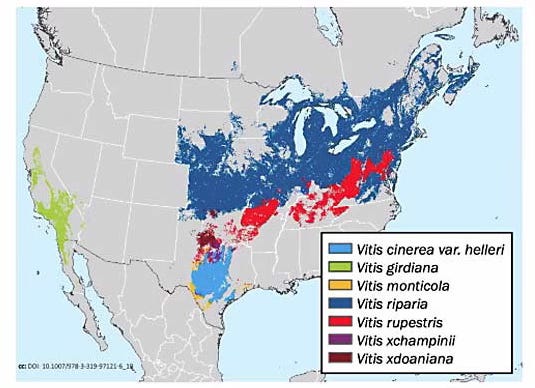
It is easy to see how these three Vitis species can offer characteristics that, aside from their main purpose of providing resistance against phylloxera, can be very useful when growing vines in a broad range of climates and conditions. These traits have been actively selected for, and hybridised versions of the above three are what make up the majority of rootstocks used in modern viticulture. It is an ongoing process, of course, and new variants are being crossbred to provide growers with more and improved options, which is particularly important when faced with ever more challenging conditions as a result of climate change.
Root Architecture
Roots are the engine room of a plant, providing structural support for the plant as well as the surface area needed for water and nutrient absorption, aided by the mycorrhizae and bacterial populations in the rhizosphere. The way in which a root system develops plays a huge role, therefore, in determining what resources become available to the plant. In the case of grapevines, roots offer very little structural support, as their vining nature means the plant relies on tendrils and external supports like trees for support. The evolution of their root systems is consequently determined more by demands for water and nutrient foraging.
In the above descriptions of V. riparia, V. rupestris and V. berlandieri, we saw how V. riparia has a relatively shallow root system as compared to the other two, predominantly as a consequence of evolving with moist and fertile riverbank soils, which meant it never needed to develop a deeper root system to find water and nutrients. The below 3D visualisation of some commonly rootstocks comes from an excellent article on root architecture by Lukas Ficthl et al. titled “A Field-to-Parameter Pipeline for Analyzing and Simulating Root System Architecture of Woody Perennials: Application to Grapevine Rootstocks” and provides a fantastic insight into the different behaviour exhibited by different rootstocks.
The names of these hybrids make understanding their structures more difficult than it needs to be. 101-14 is the result of a crossbreeding of V. riparia and V. rupestris, inheriting key traits from both, including a sensitivity to limestone and high tolerance of moisture. SO4, also known as Selection Oppenheim 4, is a cross between V. berlandieri and V. riparia, giving it a far greater tolerance of limestone soils than V. riparia alone has adapted to, while the V. riparia improves its ability for grafts to take hold. R110 on the other hand, also known as 110 Richter, is a cross between subspecies of V. berlandieri and V. rupestris is particularly well adapted to drought and is moderately adapted to limestone and its resistance to iron chlorosis is variable depending on the grafts used. As can be seen in the 3D diagram above, its root structure is very vertically oriented, which in part is why it is so well suited to drought conditions as the depth of the root system is more likely to find underground reserves of moisture.
A comprehensive overview of the properties and characteristics of available rootstocks can be found on this website. The genetics involved in the crossbreeding of rootstock material is of course far more complex than merely mixing characteristics from one species with another. Rather than producing a straightforward blend of desirable traits, the process gives rise to a complex interplay of genetic expressions, where the interaction between genes—sometimes complementary, sometimes antagonistic—can lead to outcomes that are difficult to predict. Traits such as vigour, pest resistance, and drought tolerance do not simply transfer in isolation; they are influenced by networks of genes, epigenetic factors, and environmental conditions, all of which contribute to the performance of the resulting rootstock in ways that often defy simple Mendelian expectations (namely predictable inheritance patterns based on Mendel's laws).
That said, as rootstock is often described as ruparia x rupestris or rupestris x berlandieri, understanding the main traits of the original species gives some idea of what to expect.
Rootstock and Scion Interactions
How a vine performs in a given environment does of course become far more complex than merely the genetic traits expressed in the chosen rootstock. The Vitis vinifera grafted onto the rootstock, the scion, comes with its own set of genetic traits and expressions. While the interaction between the rootstock genotype and scion material is a topic that still requires a lot of study, it appears that the choice of rootstock genotype can modulate the gene expression in the scion material, and have a definite impact on the concentration and uptake of key nutrients such as phosphorus.
A study by Zachary N. Harris et al. titled “Grapevine scion gene expression is driven by rootstock and environment interaction”, does a great job of covering the topic of how rootstocks interact with the scion material. They found that the timing within the season had a big effect on how rootstocks influenced gene activity in the leaves. Interestingly, in the reproductive parts of the plant, there were hardly any differences in gene activity between vines grafted onto different rootstocks. This was unexpected, but it suggests that the plant’s fruiting parts follow a fairly fixed developmental path that isn’t easily changed by the choice of rootstock.
In contrast, the leaves showed clear differences in gene activity depending on the rootstock. These differences became more noticeable as the growing season went on. Early in the season, around flowering (known as anthesis), only a small number of genes were affected by rootstock type. But later in the season, at the point when the grapes start to change colour and soften (veraison), and at harvest, many more genes were affected.
Different rootstocks had different effects. For example, the rootstock called SO4 seemed to reduce the activity of many genes, while 3309C increased gene activity in others. By the time of harvest, some gene activity patterns were shared between different rootstocks, and overall, all grafted vines showed some common gene activity that was different from vines that weren’t grafted at all.
The gene expressions also vary greatly in response to environmental factors, further complicating the matter, as site-specific conditions play a role in what and how genes are expressed in the scion material.
How to Select Rootstocks for a Vineyard
The question central to this whole discussion is, of course, how one should go about selecting the right rootstock for a new vineyard. As mentioned above, it is one of the most crucial decisions made in the life of the vineyard, and is a question that is greatly complicated by the complex interactions of terroir (soil type and conditions, aspect, weather patterns, etc.), the genetic profile and expressions of the selected rootstock, the chosen scion varietal and its environmental requirements, and ultimately the complex and at times unpredictable interactions between the rootstock and the scion material (given the number of unknown effects on gene expressions associated with conditions in the growing environment).
It is a question I have grappled with a fair bit in the context of putting together a plan for my own little plot of land in Greece, and given the complexities of it all, it is very much a work in progress.
Broadly speaking, however, the following needs to be taken into consideration:
Assessing Site Conditions
The first step in selecting an appropriate rootstock is to thoroughly evaluate the vineyard site. This includes conducting a full soil analysis to understand its physical and chemical properties—such as texture, pH, salinity, drainage capacity, compaction, and organic matter content. Identifying any constraints, such as shallow soils, high calcium carbonate levels, or poor water retention, is crucial. Additionally, understanding the site's water availability is vital. In dry-farmed scenarios, drought-tolerant rootstocks like 110R or 140Ru are often preferable, whereas irrigated vineyards may have more flexibility. Climate must also be considered: extremes in temperature, the length of the growing season, and susceptibility to frost will all influence the rootstock’s suitability. Finally, any existing or potential pest pressures—especially from phylloxera, nematodes, or fungal diseases—should be identified, as these will significantly narrow the field of viable rootstock choices.
Define Viticultural Objectives
Once the environmental context is clear, the next step is to define the broader viticultural goals. This includes decisions about target yields and fruit quality. A grower producing high-end wines may prioritise rootstocks that limit vigour and reduce berry size, thereby increasing concentration, whereas those targeting volume may lean towards more vigorous options. The planned trellising system also plays a role, as certain growth habits are better suited to particular canopy structures. Moreover, if the vineyard will be managed with a focus on soil health and regeneration, then deep-rooting or mycorrhizal-friendly rootstocks may be beneficial, helping to improve soil structure and organic matter content over time.
Consider the Scion Variety
Understanding the characteristics of the chosen scion variety is essential. Not all rootstocks are compatible with all scions, and some combinations may result in poor graft success, weak growth, or long-term structural problems. The natural vigour of the scion must be taken into account; a naturally vigorous variety such as Syrah may need to be tempered with a less vigorous rootstock, while a more restrained variety like Pinot Noir might benefit from a slight boost. Nutrient demands should also be considered—varieties prone to specific deficiencies (such as Chardonnay’s tendency towards magnesium deficiency) can sometimes be supported by an appropriate rootstock that enhances uptake of particular elements.
Match Rootstock to Conditions and Goals
Armed with this information, one can begin to narrow down the rootstock options by cross-referencing site conditions, pest pressures, and viticultural aims with the known characteristics of available rootstocks. For instance, 1103P, 110R, and 140Ru are frequently used in dry or shallow soils due to their deep rooting and drought resilience. For more vigorous soils where growth needs to be controlled, 420A or 101-14 Mgt may be appropriate. Rootstocks such as Ramsey and Dog Ridgeoffer strong nematode resistance, while 41B and 110R cope well with calcareous soils. It’s best to identify two or three potential candidates at this stage, each of which meets the core environmental and viticultural criteria.
At this point, it is advisable to consult regional experts, nurseries, and viticultural research bodies. Local experience is invaluable, particularly in understanding how specific rootstocks perform over time in the area’s soils and climate. Published trial data, grower anecdotes, and nursery recommendations can help you avoid common pitfalls. It is also important to factor in shifting climate patterns—what worked well a decade ago may be less suitable under the conditions predicted in the coming decades.
There may also be practical considerations, such as potential difficulties in grafting and the availability of certified, disease-free planting material in the desired format—whether as bare-root vines, bench-grafted plants, or own-grafts—which can be a deciding factor in what to use.
Final Thoughts
Having written and read up on the above, I must come to the conclusion that I am only beginning to scratch the surface of this topic, and that, as with so many topics in viticulture, there is no single clear-cut answer to anything. When the time comes to select rootstock material for my plot, I will draw heavily on the experience of others with the same varietal before making any decision.
Usually, a vineyard block will be planted to one rootstock cultivar and one scion varietal. However, there is no hard and fast rule that says this has to be the case. I wonder whether, given the range of potential expressions caused by the rootstock selection, and the inherent trade-offs that have to be made for any specific location, a blend of multiple rootstocks might be an idea worth pursuing. While they would have to be broadly selected to match the main constraints of the local environment, I can only imagine such a field blend of rootstocks would serve to add complexity, even if the scion material is all of the same clone/varietal. If anyone reading this has experience with the matter, I would love to hear your thoughts on this.
This is a topic that, as I started off by saying, often goes under the radar in normal wine discourse, but is one that I believe ought to be discussed more. It’s all well and good discussing the impact of schist on Riesling, for instance, but without understanding the third part of the equation, knowing just how big an influence rootstocks have on wine quality, it is at risk of becoming a bit superficial—or at the very least, incomplete. Should we put rootstocks on the label? Maybe not, but broader understanding of the topic is useful, and I hope that the above has contributed towards that.

